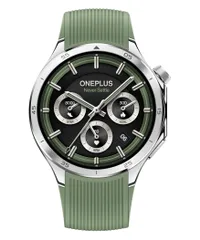These are the best smartwatches we've tested that I actually recommend for Android and iPhone
These are the best smartwatches in 2025, from affordable gems to fitness-focused flagships

We've been testing the best smartwatches for over a decade, witnessing their evolution from simple smartphone companions to full-fledged wellness-monitoring, fitness-tracking wrist-based digital assistants.
Leading the pack is the Apple Watch Series 11, our top smartwatch for iPhone owners. Starting at $399, it's far from the cheapest smartwatch on our list, but it is arguably the most well-rounded. Prefer a full-featured bargain watch? The Apple Watch SE 3 offers nearly all the same functions as the newer Series 11. And it's often on sale for under $200.
For Android owners, the best smartwatch is the Google Pixel Watch 4, one of the longest-lasting, most feature-packed smartwatches available today. For a cheaper Android-friendly alternative, consider the Samsung Galaxy Watch 7. It boasts best-in-class sleep insights — the very same ones you get from the newer Galaxy Watch 8 — but for less.
Quick list

The newest Apple Watch is thinner than its predecessor making it one of Apple's comfiest wearables yet. It also features a 24 hour battery life for the first time. Plus, a familiar user interface, reliable wellness tech and loads of useful apps all add up to the Apple Watch 11 being the best smartwatch for iPhone users in 2025.

The Samsung Galaxy Watch 7 is one of the lightest and comfiest full-featured smartwatches you can buy today. It also offers the same class-leading sleep insights and sleep apnea detection as the newer Galaxy Watch 8, and most of the same features, but can easily be picked up for well under $300.

The Google Pixel Watch 4 in 45mm is the best Android smartwatch overall, with top-of-class battery life (60+ hours per charge per our testing), access to the best AI smartwatch assistant, Gemini, and loads of health, fitness, and safety tools. Comfortable and sleek, it also sports a super-bright and responsive touchscreen.

The Apple Watch SE 3 is an incredible value and the best affordable smartwatch out there today, offering many of the best Apple Watch features at a fraction of the price. It even comes with LTE, making it a solid low-cost device for safety and connectivity. Plus, the 40mm version is great for folks with smaller wrists. Of course, you'll need an iPhone to use it.

The Garmin Venu 4 boasts many of the brand's best fitness tracking and training tools, wellness insights and sleep data. It also sports a bright and easy-to-view screen, outstanding battery life, rock-solid GPS and compatibility with both Apple and Android devices. Toss in a stylish and comfortable design and you've got the best smartwatch for fitness. However, you won't find much by way of third-party apps.

The Garmin Forerunner 265 is the best smartwatch for runners of all experience levels. It has a bright and colorful screen that's easy to see in daylight, accurate GPS tracking, advanced training metrics, detailed workout insights and helpful recovery tips. Available in two case sizes, the Forerunner 265 is also pretty darn sporty-looking and plenty comfy.
Best smartwatch specs compared
| Header Cell - Column 0 | Apple Watch 11 | Samsung Galaxy Watch 7 | Google Pixel Watch 4 | Apple Watch SE 3 | Garmin Venu 4 | Garmin Forerunner 265 |
|---|---|---|---|---|---|---|
Launch price | $399 | $299 | $349 | $249 | $549 | $449 |
Case size | 42mm, 46mm | 40mm, 44mm | 41mm, 45mm | 40mm, 44mm | 41mm, 45mm | 42mm, 46mm |
Weight | 30 g (42mm), 37 g (46mm) | 29 g (40mm), 34 g (44mm) | 31g (41mm), 36.8g (45mm) | 26 - 28 g (40mm), 33 g (44mm) | 33 g (41mm), 38 g (45mm) | 39 g (42mm), 47 g (46mm) |
Display size | 1.6 in (42mm), 1.8 in (46mm) | 1.3 in (40mm), 1.5 in (44mm) | 1.27 in (41mm) , 1.46 in (45mm) | 1.57 in (40mm), 1.78 in (44mm) | 1.2 in (41mm), 1.4 in (45mm) | 1.1 in (42mm), 1.3 in (46mm) |
Display type and brightness | Wide-angle OLED, 2,000 nits max brightness | AMOLED, 2,000 nits max brightness | 320 ppi AMOLED, 3,000 nits | OLED, 1,000 nits max brightness | AMOLED, 2,000 nits max screen brightness | AMOLED, 1,000 nits max screen brightness |
Waterproof rating | 50 meters | 50 meters | 50 meters | 50 meters | 50 meters | 50 meters |
Battery life tested | 24 hours, 36 hours in low-power mode | 24 hours, 40 hours in low-power mode | 30 hours (41mm), 40 hours (45mm) | 18 hours, 24 hours in low-power mode | 10 days (41mm), 12 days (45mm) | 13 days / 20 hours with GPS (42mm), 15 days / 24 hours with GPS (46mm) |
LTE | Optional | Optional | Optional | Optional | No | No |
The best smartwatches you can buy today
Why you can trust Tom's Guide
Best smartwatch for iPhone

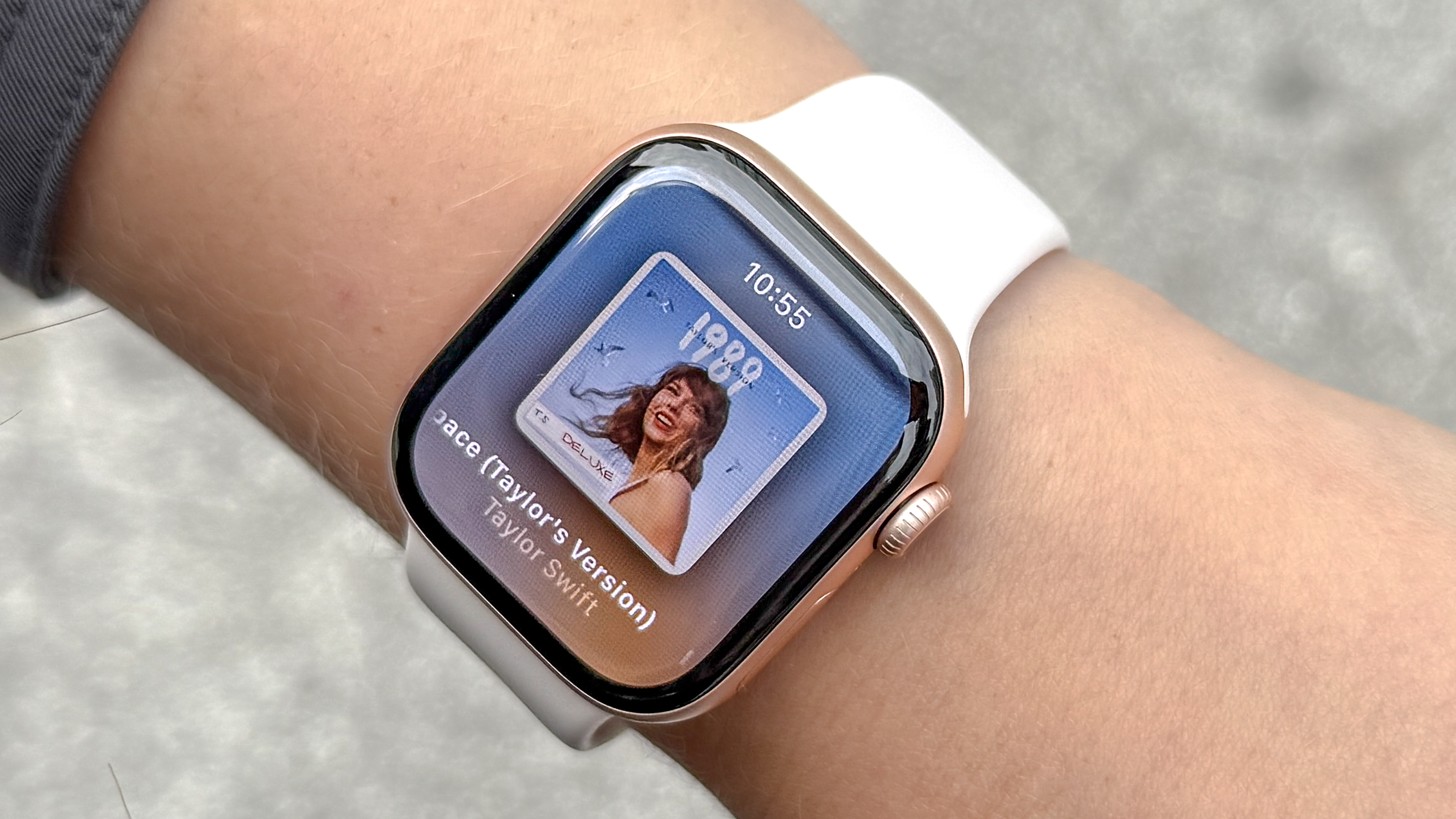


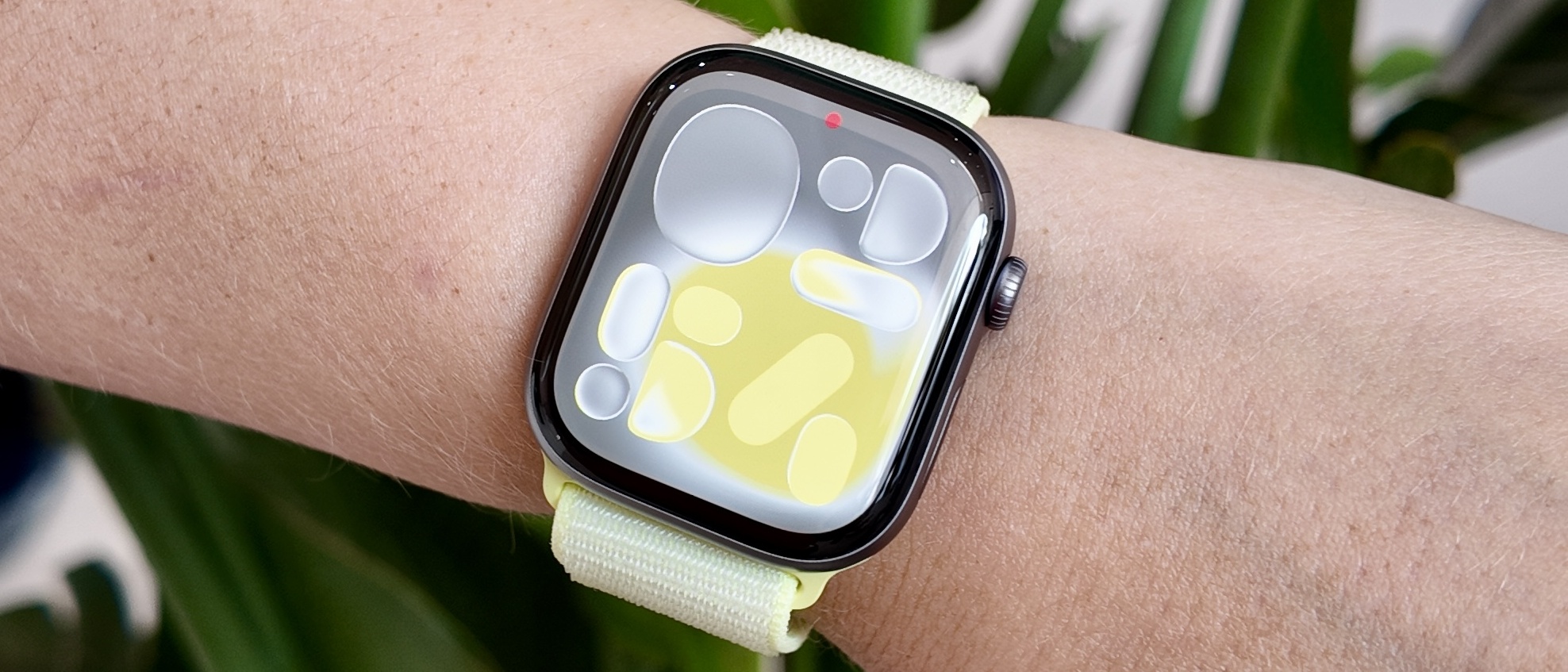

Specifications
Reasons to buy
Reasons to avoid
The Apple Watch 11 is the best Apple Watch yet, and a smartwatch many of us at Tom's Guide use daily. It’s not a major upgrade over the Apple Watch Series 10 but there are some noteworthy changes.
The main difference between the Apple Watch 11 vs Apple Watch 10 is the battery life. The newer watch now has 24 hours of battery life, which is an improvement on its predecessor's 18 hours.
On the surface, the Apple Watch 11 looks identical to the Apple Watch 10, which had a big redesign compared to the Series 9. It's still easy to view at odd angles thanks to Apple's use of wide-angle OLED display technology.
The watch is available in a 42mm and 46mm case size. There are also new case finishes and materials, too, including lightweight titanium options, plus the Apple Watch 11 offers double the scratch resistance, which should better prevent damage to the display.
During testing, we found the Apple Watch 11 was comfortable and easy to use. From tracking workouts to messaging friends to navigating cities to monitoring sleep, the Series 11 is extremely easy to use and interact with. Speaking of sleep, this is one of the first Apple Watch models with Apple's new sleep score.
The device ships running watchOS 26. This latest software delivers a new Workout Buddy feature, which is practically an AI coach on your wrist, and hypertension alerts. It also showcases Apple's latest Liquid Glass design.
The Series 11 also boasts a bump from LTE to 5G connectivity, for better connection on the go. All of this adds up to the best Apple Watch for most people, and also the best smartwatch for iPhone users overall.
- Read our full Apple Watch Series 11 review
Best smartwatch for sleep tracking

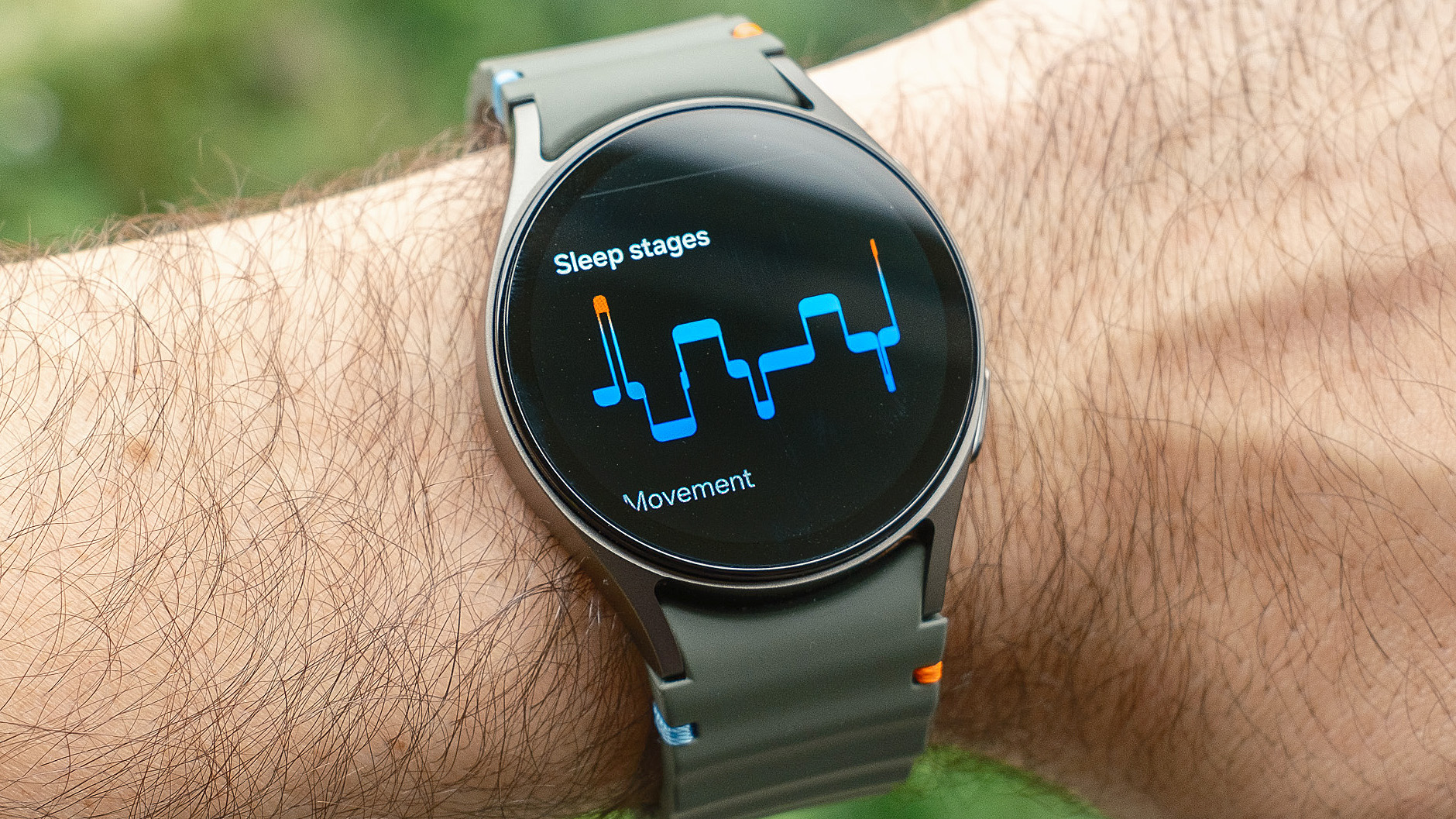




Specifications
Reasons to buy
Reasons to avoid
With the launch of the Samsung Galaxy Watch 8, it's now easy to find the Galaxy Watch 7 on sale for a sizable discount, and when it comes to sleep tracking insights, the Watch 7 is a match with the Watch 8.
Even though the newer model offers a few new holistic tools, like cardiovascular load tracking and an antioxidant measuring tool (of questionable usefulness), in our opinion, these aren't life-changing enough to warrant the higher price tag. Here's a detailed comparison of the Galaxy Watch 8 vs. Galaxy Watch 7.
Not only is the Samsung Galaxy Watch 7 our top pick for sleep tracking, it's also the best full-featured smartwatch for Android users on a budget, thanks to a whole suite of impressive AI-underpinned wellness features beyond sleep-related ones, a lightweight and comfortable design, and tons of useful smart features.
Sleep insights are provided after only one night of use, unlike the competition, and they are both elaborate and digestible, with details on your sleep cycles, warnings for signs of snoring, detection for sleep apnea, and more.
However, my favorite feature on the Galaxy Watch 7 has to be Samsung's Energy Score metric, which is updated daily and takes into account sleep quality, recent workouts, overall health trends, and more to help better understand your body's abilities and limitations.
Available in 40 and 44mm, the Galaxy Watch 7 represents the last generation with Samsung's older circular case design; the newer Galaxy Watch 8 sports a more rectangular cushion case. Battery life is good for roughly 24 hours using the always-on display and 40 hours in power-save mode, which is par for the course.
- Read our full Samsung Galaxy Watch 7 review
Best Android smartwatch
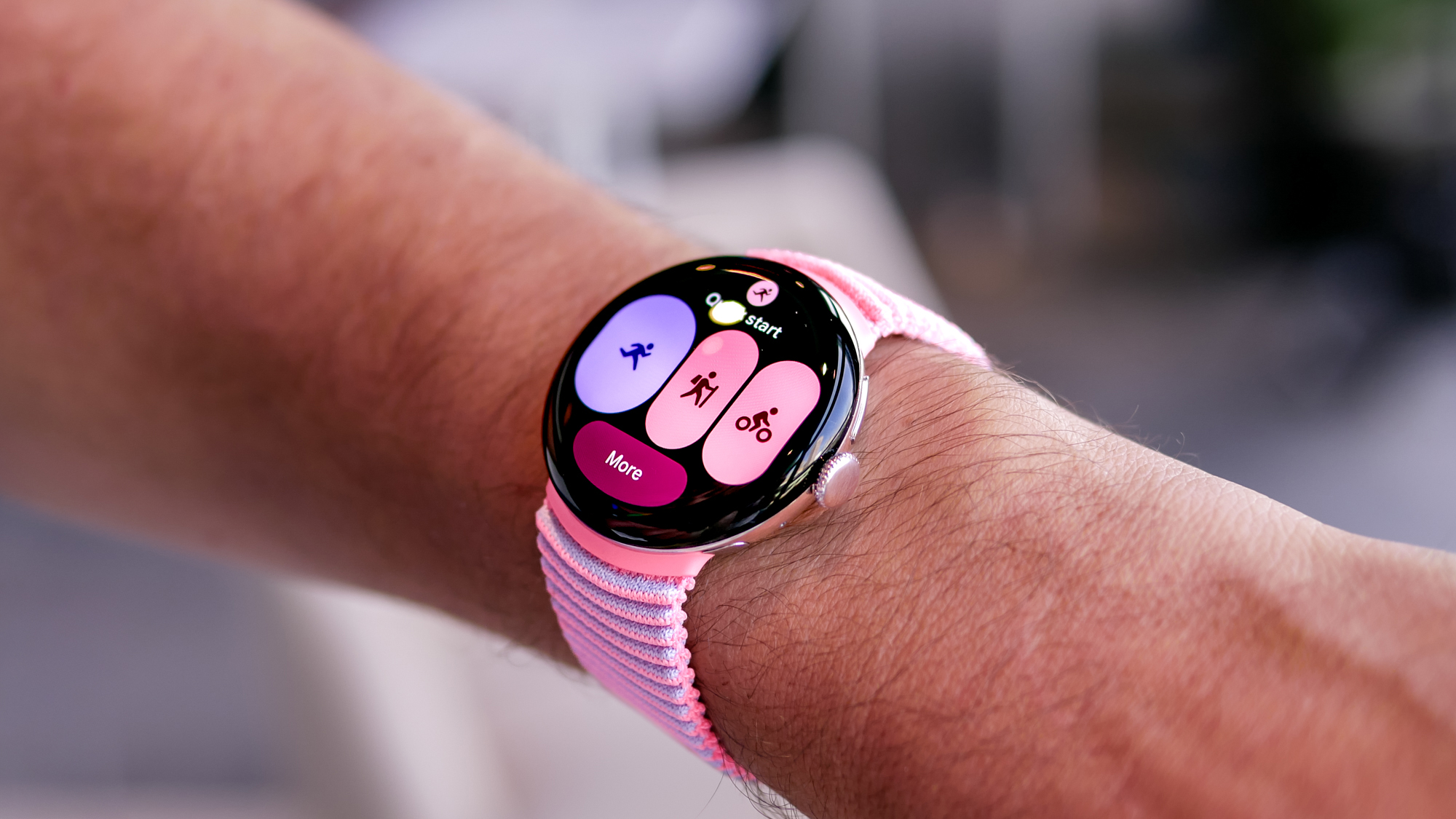

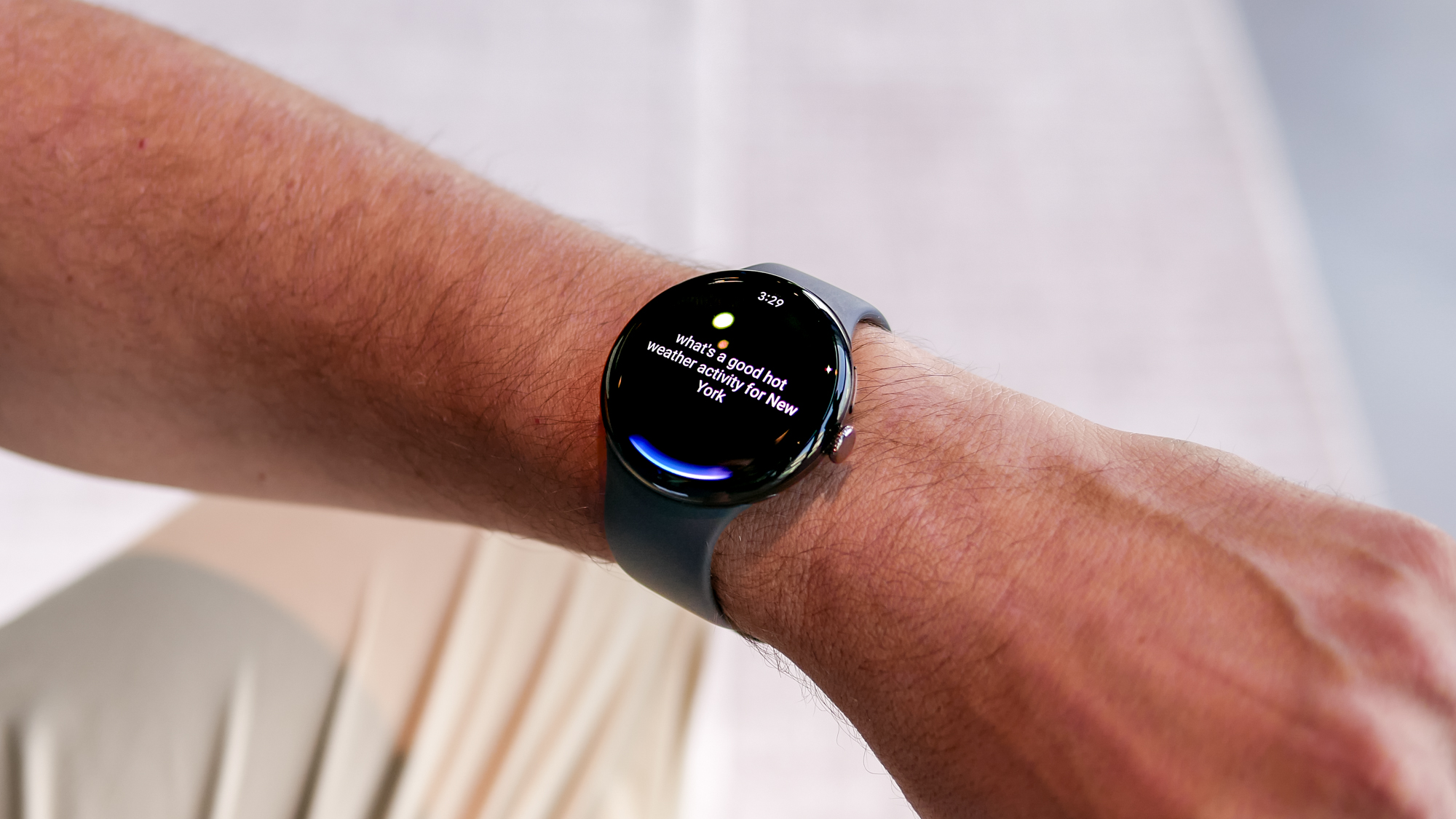



Specifications
Reasons to buy
Reasons to avoid
The Google Pixel Watch 4 is the best smartwatch for Android users right now, thanks to best-in-class battery performance that cruised for an average of 60 hours per charge in our testing (45mm model).
It also boasts the best AI voice assistant, Gemini, built right in. Best of all, a new gesture control allows you to activate Gemini by simply raising your wrist, a feature you won’t find on any other smartwatch.
The Pixel Watch 4 also gains a bigger and brighter display than its predecessor, despite the same relatively sleek and comfortable case dimensions and a similar weight. A max brightness of 3,000 nits is a match with the Samsung Galaxy Watch 8 and 1,000 nits greater than the Pixel Watch 3 or even the Apple Watch Series 11.
Health and fitness tracking tools are expansive, with particularly detailed insights into sleep quality. An updated GPS with two bands instead of one should result in even greater fitness tracking accuracy when working out outdoors (and the Pixel Watch 3 was no slouch at tracking).
Google’s latest is also one of only a small handful of smartwatches with an emergency SOS feature that can connect you to help via satellite when off the grid. The other is the $799 Apple Watch Ultra 3. However, only the pricier LTE-capable models support it (though no data plan is actually needed to use it).
The device also supports a plethora of Fitbit’s best training metrics, from a daily Readiness and Sleep Score to insights into heart rate variability and a user’s training load. Finally, unlike the new Samsung Galaxy Watch 8, which increased $50 across the lineup, the Pixel Watch 4 is priced the same as the Pixel Watch 3.
- Read our full Google Pixel Watch 4 review
Best affordable smartwatch




Specifications
Reasons to buy
Reasons to avoid
The Apple Watch SE 3 represents an exceptional value and is the best affordable smartwatch you can buy right now. The $249 device doesn't have all the latest bells and whistles found in the Ultra 3 or Series 11 but it still stands out for its great fitness tracking and safety features. It also comes with optional 5G for on-the-go connectivity without the need to carry a paired smartphone.
Best of all, the Apple Watch SE 3 is compatible with the latest watchOS 26 software, which unlocks a host of new features including Apple's useful sleep score.
Unlike the Series 11 and Ultra 3, the SE doesn't offer as bright or large a display. Users also miss out on an ECG monitor and skin temperature sensor.
However, if those features aren't deal-breakers for you, the SE 3 is a highly capable option for iPhone users. It's also Cupertino's smallest and easiest-wearing Apple Watch, particularly the 40mm option, something folks with petite wrists can surely appreciate.
- Read our full Apple Watch SE 3 review
Best smartwatch for fitness




Specifications
Reasons to buy
Reasons to avoid
The Garmin Venu 4 is one of the best Garmin watches because it's both a capable workout companion and a stylish lifestyle device.
The combo also makes it the best smartwatch for fitness enthusiasts. Maintaining Garmin’s reputation for thorough workout tracking and accurate GPS, the Venu 4 also offers the smarts of mirrored notifications and an on-wrist voice assistant.
And even though Garmin still lacks a large third-party app store and continues to steer clear of LTE support, the Venu 4 has other smart features up its sleeve, like Garmin Pay for contactless payments and onboard storage capacity for music. You can also make and receive calls from the wrist, assuming your paired phone is near.
While tracking workouts, Incident Detection works similarly to Apple's Fall Detection for safety. And, an abundance of sports profiles, helpful recovery time suggestions, and on-watch interval creation keep you tuned into your activity, too.
The device additionally features nap-tracking and a nifty sleep coach feature to keep tabs on your rest, while daily summaries offer behavioral insights. What's more, with up to 20 hours of battery in GPS mode and 12 days in smartwatch mode, you rarely need to stress about keeping the Garmin Venu 4 charged. It also comes in two easy-wearing sizes, each sporting a bright and immersive AMOLED screen.
- Read our full Garmin Venu 4 review
Best smartwatch for runners




Specifications
Reasons to buy
Reasons to avoid
Our pick for the best running smartwatch is the Garmin Forerunner 265. This lightweight wearable gives you everything you’d want in a running watch, from accurate tracking to music controls to the ability to create custom workouts, for about the price of an Apple Watch Series 10. The device also offers access to Garmin’s wide range of training metrics, which help you not only plan workouts but also calculate recovery time.
During testing, we found the Garmin Forerunner 265's beautiful AMOLED display to be bright and easy to read, even in direct sunlight. The display is also touch-sensitive, which makes it easy to navigate. However, there are plenty of buttons along the side of the case if you prefer physical controls. The battery is long enough to last through a few workouts, even with music playing.
The Forerunner 265 has inherited some of the more advanced health features usually reserved for Garmin’s more expensive running watches. It can also track complex multisport training sessions in the triathlon mode and features Garmin's extremely useful Training Readiness Score.
- Read our Garmin Forerunner 265 review
Also tested
We test a lot of smartwatches here at Tom's Guide, but ultimately, some of our favorite models aren't cut out for inclusion above. This can be for a variety of reasons, or just one.
Take the Apple Watch Ultra 3. It's a fantastic smartwatch, but it costs $799. This is too much coin to comfortably recommend, especially when the Apple Watch Series 11 starts at $399 and is nearly as good.
The Apple Watch Ultra 3 is the brand's longest-lasting wearable, averaging 42 hours of battery per charge (70 hours in low-power mode). It's also the most durable Apple Watch, with 100 meters of water resistance, compared to 50 meters on the other models. But, with a starting price twice that of the newer Apple Watch Series 11, most folks would be better off purchasing the latter. Not only does the Series 11 have all the same features as the Ultra 3, but it's lighter and thinner, too.
Read our Apple Watch Ultra 3 review
The Samsung Galaxy Watch 8 is the brand's newest smartwatch. Like the Galaxy Watch 7, it comes in 40mm and 44mm; however, there's also a 46mm Galaxy Watch 8 Classic with a rotating bezel. Of the new models, this is the one we recommend most, thanks to the clicky bezel, an extra (programmable) button, and better battery life (roughly 42 hours per charge). Compared to the Galaxy Watch 7, in addition to some new holistic tools, the newer model boasts Google's Gemini AI built in. Of course, this feature is slated to eventually come to the Galaxy Watch 7, which remains our top Samsung pick. Here's a closer look at the Galaxy Watch 8 vs. Galaxy Watch 7.
Read our Samsung Galaxy Watch 8 review
The Galaxy Watch Ultra is Samsung's toughest-built, longest-lasting smartwatch with up to two days of battery per charge. Feature-wise, it's essentially a match with the Galaxy Watch 8 (and not that different from the Galaxy Watch 7). However, if you don't mind the added cost and appreciate a larger screen and beefier design, then the Galaxy Watch Ultra is worth a look.
Read our Samsung Galaxy Watch Ultra review
The OnePlus Watch 3 is a bold and stylish smartwatch for Android users with better battery life than the Pixel Watch 3, Galaxy Watch 7 and Galaxy Watch Ultra: up to five days per charge. It also offers comprehensive fitness tracking and works with a useful range of Wear OS apps. However, there's no support for cellular service or common safety features like crash detection and sleep apnea monitoring. Sizing is limited to just 46.6mm, which is fairly large.
Read our OnePlus Watch 3 review
How we test the best smartwatches
At Tom's Guide, we've been assessing smartwatches since the debut of the very first Apple Watch a decade ago. Over the years, as devices have gotten more advanced, particularly regarding fitness and wellness features, our testing has become more rigorous.
It all starts with setting up the smartwatch just like we would any other shiny new piece of tech. Once properly fitted and secured, the fun begins: that smartwatch follows us everywhere we go, from early-morning workouts to late nights on the town and everything in between.
All the while, we're measuring how its battery life claims stack up in real-world use. We're also assessing comfort, usability, build quality and any new apps or features. Sometimes this means going for an ocean swim with the Apple Watch or climbing a literal mountain with three popular smartwatches in tow. Other times it means hitting the slopes with our favorite Polar watch or biking up the steepest hill in town wearing a Garmin.
To test fitness-tracking accuracy, we also frequently pit the best smartwatch models against one another while taking on workout challenges like runs, hikes, bike rides and more, because who doesn't love a showdown of the Apple Watch 11 vs the Garmin forerunner 570 or Pixel Watch 4 vs Samsung Galaxy Watch 8?
These challenges help us understand things like which models excel at GPS precision, measuring a user's rapidly changing heart rate, counting your steps and calculating elevation changes.
In addition to testing fitness features, we also try any onboard safety features, including tools that monitor for sleep apnea and irregular heartbeats. If there's an app store, we'll install the most popular third-party apps to see how that changes the experience of the watch.
Finally, we consider how a device stacks up against the competition in terms of cost, features, tech and design. All of this then gets distilled into a product review and ultimately, this buying guide.
How to choose the best smartwatch for you
Choosing the right smartwatch for you all comes down to what you want the device to do. If you're looking for a wearable that can function as an extension of your smartphone, then options from Apple — if you're an iOS person — and Google or Samsung — if you're an Android person — are going to suit you best.
Samsung's smartwatches are some of the most versatile for Android owners, as they'll work with most Android phones, although certain features are locked exclusively to the latest Samsung smartphones. Similarly, some of the newest Apple Watch features, like AI-generated message summaries, require the latest/greatest handsets.
Whichever full-featured smartwatch model you choose, springing for the latest version will likely mean you're getting the brightest display, fastest processor, and newest health tech.
The other main type of smartwatch is fitness-focused models from brands like Garmin, Polar and Coros. These devices don't offer the hearty buffet of third-party apps found on the aforementioned, nor do they come with loads of built-in smart features, but that's by design.
Instead, you tend to get comparably more advanced training tools, metrics and insights than what you'll find on the latest Apple, Google or Samsung watch. And while you won't be able to answer a phone call or order a pizza, many of the best Garmin watches will mirror your smartphone notifications while supporting lifestyle features including tap-to-pay and wrist-based music control for a connected device.
Once you've narrowed your best smartwatch choice down to either a full-featured or fitness-focused option and have selected the perfect model, you still may have to decide on a size and whether it sports a cellular antenna, which costs more and requires a monthly subscription (but means you can leave your smartphone at home).
Not all smartwatches come with LTE support, nor do all come in more than one size. However, every model listed here is available in a range of styles and colors to suit your taste.
FAQs
Should I wait for a new smartwatch to launch or buy one now?
Unless the launch of the device is imminent, there's little reason to hold out and wait for a rumored smartwatch to come to market. Keep in mind that updates to full-featured smartwatches like the flagship Apple Watch and Samsung Galaxy Watch lines tend to be fairly iterative year-over-year.
Of course, those who absolutely need the latest/greatest wearable from their favorite brand can always trade in their current watch for a discount on the next-gen model.
Are smartwatches worth it?
Smartwatches have come a long way since the first Apple Watch debuted more than a decade ago.
More than a means to view phone notifications from the wrist, these high-tech wearables are now full-blown wellness devices with 24/7 health monitoring, workout training tools, advanced sleep-tracking analysis, women’s health tracking features and more. Some can even alert you to possible health conditions, like sleep apnea and atrial fibrillation (AFib).
Of course, on-the-go connectivity is still core to the appeal of the smartwatch and in addition to bringing handy apps along with notifications and alerts to the wrist, most models also offer useful safety features, like fall and crash detection, for added peace of mind. These tools can alert loved ones or emergency responders if such an incident is triggered.
Which is the best smartwatch brand?
The best smartwatch brand is going to vary from person to person. Factors like the type of smartphone you own and what you want out of your smartwatch will help determine which smartwatch brand is right for you.
If you want your smartwatch to operate like a wrist-based smartphone with the ability to mirror not just notifications but all your favorite apps, features and more, then the best smartwatch brand will likely be the same one that manufactured your handset.
Devices from Apple, Google and Samsung also provide the widest selection of apps and wrist-based smart tools.
On the flip side, Garmin is the best smartwatch brand for subscription-free workout training tools, GPS reliability and battery longevity. Garmin models also play nicely with both Androids and iPhones but offer far fewer smart features and apps.
Can a smartwatch replace my phone?
To truly leave your phone at home, you’ll want to opt for a smartwatch model with cellular LTE connectivity, which comes with a monthly fee. The tradeoff is that you can make calls, stream music and videos, pay for items, use maps and more, all without your handset nearby.
That said, many non-LTE smartwatches come with onboard storage to download music so that you can jam out to tunes without your phone. This includes some of the best Garmin sports watches, like the Forerunner 265 and Venu 4.
Most smartwatch models in 2024 sport an onboard GPS antenna for location tracking which means that you won’t need to lug your phone on a run or hike to view a post-workout route map and insights into metrics like speed, cadence, elevation gain and more.
Do smartwatches require a monthly subscription?
Most smartwatch models do not require a monthly subscription. The exception is if you want cellular connectivity, in which case, you’ll need to pay a monthly carrier fee. Not all smartwatch models work with LTE, though.
Cellular connectivity is optional and costs an extra $50 on models like the Apple Watch SE and Samsung Galaxy Watch 7. Having a cellular model doesn’t mean you need to sign up for a smartwatch data plan, it just means that it’s compatible with one, should you choose to add it.
Higher-end models like the Apple Watch Ultra 2 and Galaxy Watch Ultra come with cellular compatibility baked in, there is no GPS/WiFi-only version.
Some smartwatch models offer additional health and workout training features for a monthly fee. While Apple, Garmin and Samsung offer free wellness and fitness metrics and tools — for now — Google paywalls advanced training features and insights via Fitbit Premium ($10/month or $80/year).
Get instant access to breaking news, the hottest reviews, great deals and helpful tips.

Dan Bracaglia is the Tom’s Guide editorial lead for all things smartwatches, fitness trackers and outdoor gear. With 15 years of experience as a consumer technology journalist testing everything from Oura Rings to instant cameras, Dan is deeply passionate about helping readers save money and make informed purchasing decisions. In the past year alone, Dan has assessed major product releases from the likes of Apple, Garmin, Google, Samsung, Polar and many others.
An avid outdoor adventurer, Dan is based in the U.S. Pacific Northwest where he takes advantage of the beautiful surroundings every chance he gets. A lover of kayaking, hiking, swimming, biking, snowboarding and exploring, he also makes every effort to combine his day job with his passions. When not assessing the sleep tracking and heart rate accuracy of the latest tach gadgets, you can find him photographing Seattle’s vibrant underground music community.



